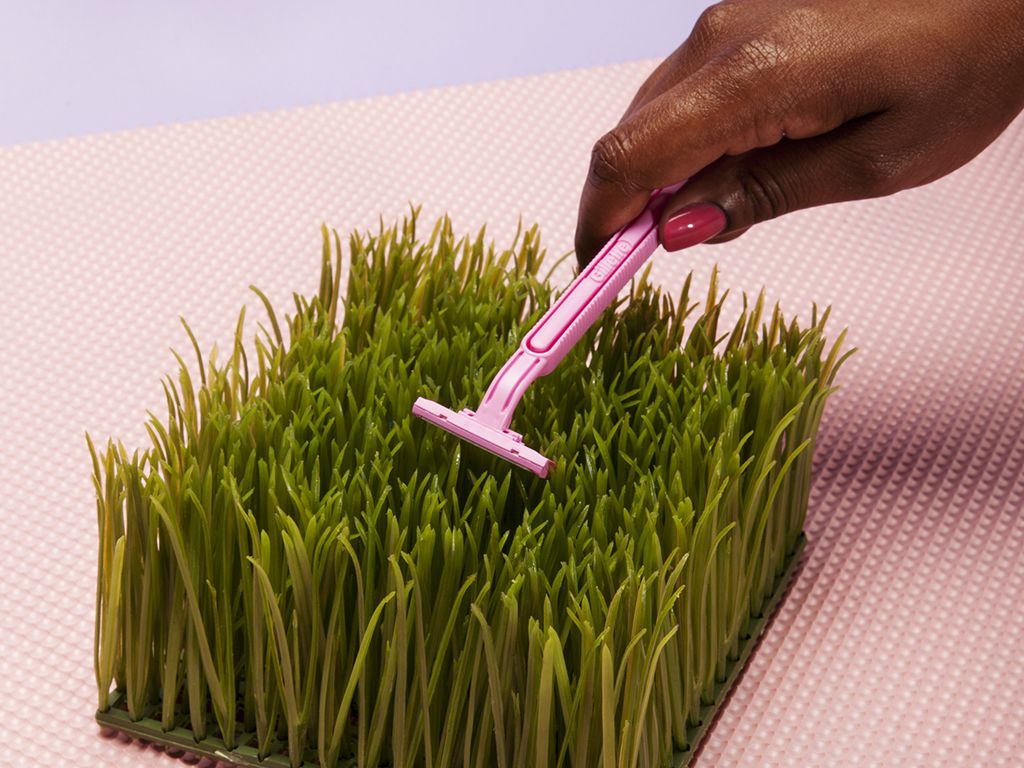Excessive Facial Hair Growth Could Be Hirsutism—Here's What You Need to Know

Have you been noticing more hair growth on your face and body lately? Perhaps you’ve chalked it up to the pandemic and becoming more relaxed with hair removal (if you’re into hair removal in the first place, that is). Or maybe, considering a recent discovery that the stress hormone cortisol is present in hair follicles, you’ve been super stressed and wondering if that’s playing into your growth.
Whatever the case may be, noticing excess hair growth in places where you may not want it can be rather disconcerting. But, there’s hope: Excessive facial and body hair growth could actually be a sign of hirsutism, a common endocrine disorder that affects roughly 10 percent of women in the United States.
To find out whether or not hirsutism is at play in your own life, keep reading to learn what causes the disorder, how it manifests, when you should seek medical advice, and which hirsutism treatment options are worthwhile once you do.
What Is Hirsutism?
“Hirsutism is a hair disorder that results in an increased number of terminal hairs in women with a male pattern of distribution, such as the cheeks, chin, upper lip area, chest, upper back, abdomen, and groin,” says Dr. Alexis Stephens, a board-certified dermatologist and the founder of Parkland Dermatology & Cosmetic Surgery in Florida. “These are body locations where high levels of the hormone androgen are required for hair growth.”
Hirsutism 101
Hirsutism is characterized by coarse, terminal hair growth in women in areas more commonly associated with men. Dr. Adeline Kikam, a board-certified dermatologist and the founder of @brownskinderm, says that most often, these areas include the upper lip, beard area (chin and sideburns, included), chest, lower abdomen, upper back, inner thighs, and groin. “Men have higher levels of androgen hormones during and after puberty which is responsible for terminal hairs in the aforementioned sex-specific areas of the body and, as such, when there is an excess amount of this ‘male hormone’ in women, we see excessive hair growth in these areas in as well,” she explains.
What Causes Hirsutism?
While hirsutism is most commonly associated with hormonal imbalance—particularly the presence of elevated androgen hormones—Kikam says that it’s possible for women who have normal androgen levels to also develop hirsutism. Either way, she says that the most common cause of hirsutism is polycystic ovarian syndrome (PCOS). Of course, that’s not the only cause. She says that hirsutism can also be caused by medication, thyroid dysfunction, adrenal tumors, and unknown factors—which is why she recommends getting a full workup if you’re concerned that hirsutism may be at play.
Dr. Orit Markowitz, a board-certified dermatologist based in New York City, adds to this, noting that menopause-related hormone changes can also be a contributing factor to excess hair growth. Given the many potential causes, getting a doctor’s opinion can prove to be very helpful in treating your symptoms of hirsutism.
That said, if you’re not quite ready to head to the doc, you can follow the steps below to help gain some clarity on what’s happening to your body.
01
of 05
Note Where the Excess Hair Is Growing
Since hirsutism presents itself in areas more commonly associated with male hair growth, assessing your body for where your hair is growing is the first step in determining if you may have hirsutism.
As Kikam reminds us, hirsutism is commonly associated with excess hair growth in areas that are not typical high-density areas for women. “This is just a clue,” she adds, noting that an additional workup should be done to differentiate it from hypertrichosis—excessive hair growth anywhere on the body—which can affect anyone.
If you don’t notice excess dark hair growth (because remember, the key to hirsutism is coarse, dark hairs), North Carolina-based board-certified dermatologist Dr. Scott Paviol says that you might be confusing normal female hair growth with a more severe disorder.
“Women can have increased fine vellus hairs [also known as peach fuzz] on their face and that is not associated with androgen excess,” he explains, noting that it’s a very normal occurrence. (Of course, if you’re still not satisfied with peach fuzz, you can use a dermaplaning device like the Dermaflash Luxe Dermaplaning Exfoliation and Peach Fuzz Removal Device, $199.)
02
of 05
Determine the Density of the Hair
It’s not just about the area of growth, but the density, too. With that in mind, Markowitz explains that there are three levels of hirsutism.
“Hirsutism can be measured by the elevated androgen levels using the Ferriman-Gallwey score, which determines the level of hirsutism someone has by checking nine areas of the body for hair growth,” she shares. “A normal level would score less than eight, a mild level scores between eight and 15, and anyone with a score higher than 15 has a severe case.”
03
of 05
Be Aware of the Side Effects
While noticing the location and density of the hair is an important step in determining whether or not you may have hirsutism, another thing to consider is how your hair growth makes you feel.
“Excessive unwanted facial hair can impart psychosocial stress. It can also lead to pseudofolliculitis—also known as ingrown hairs—which, on darker skin, can lead to post-inflammatory hyperpigmentation and scarring,” Stephens says.
Kikam adds to this, noting that “excessive hair growth—especially on very visible areas like the face, which is so intricately linked to identity, self-awareness, and what it means to be feminine in society—can be a cause for decreased self-esteem, stress, anxiety, and even depression in many with this condition.”
Which is to say, even if you’re not positive that hirsutism is the cause for your hair growth, consulting a doctor to help determine what is at play will help you to feel better in your own skin. This leads us to …
04
of 05
Consult a Doctor
Hirsutism isn’t always a cut-and-dried disorder. That’s because the excessive hair growth might not be immediately alarming. According to Stephens, it can be seen alongside other signs, such as amenorrhea (lack of periods), acne, male pattern alopecia, and/or deepening of the voice. As such, if you notice any of these signs, she recommends consulting a physician to discuss the next steps and potential hirsutism treatment options.
Another thing to note is that, according to Kikam, sudden changes in hair growth patterns aren’t associated with normal developmental milestones—especially in adult women. So, if you’re thinking that maybe this sudden surge of thick coarse hair is just a phase, she says to head to a doctor before lingering further on that thought. After all, even if you’re open to embracing your excessive facial and body hair, it helps to know what medical issues are churning within your body.
05
of 05
Consider Treatment Options
Once you’ve consulted with your doctor, they’ll likely point you in the direction of what they believe to be the best hirsutism treatment for you. According to Stephens, hirsutism can be treated with a combination of therapies, including laser hair removal, spironolactone, birth control pills, or Vaniqa (a topical prescription).
Since effective treatment depends on the underlying cause of the hirsutism, Kikam says it’s better to work with a doctor than trying to self-diagnose at home with hirsutism treatments.








